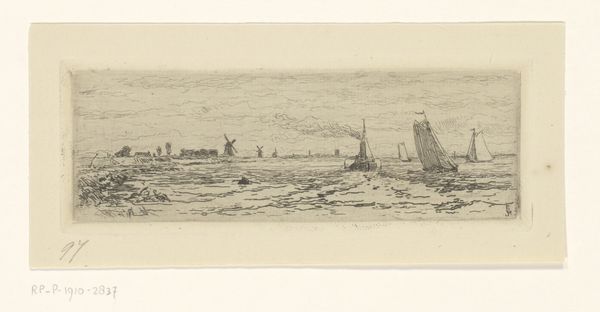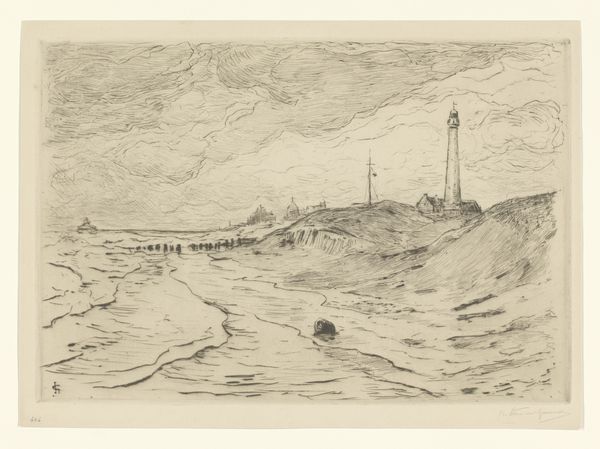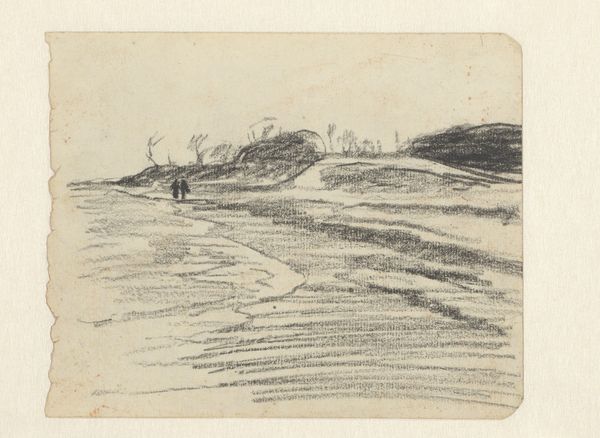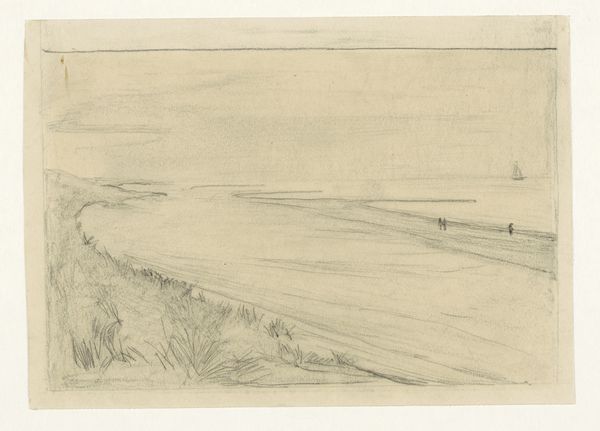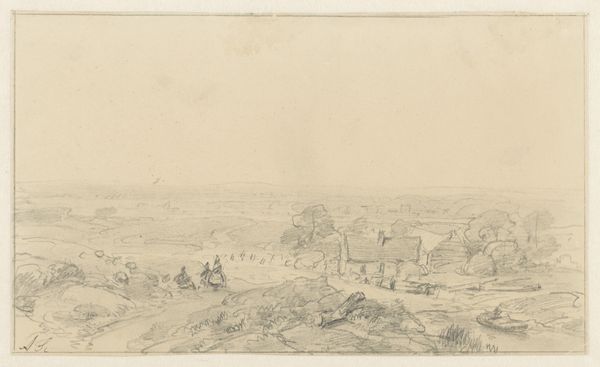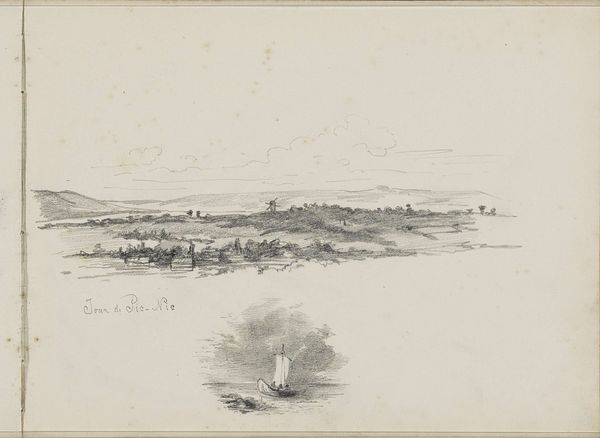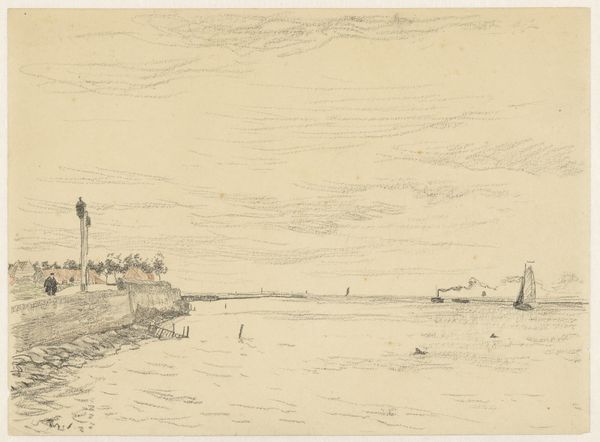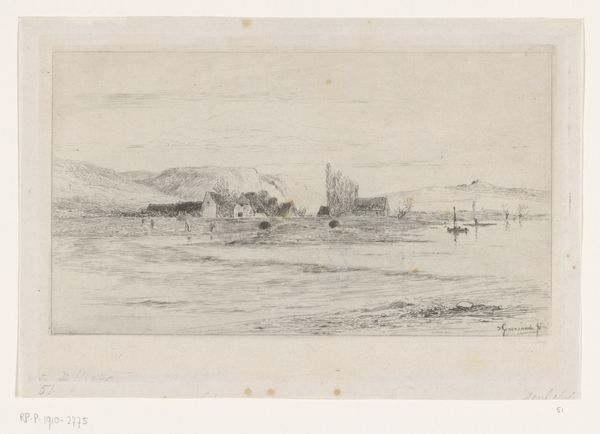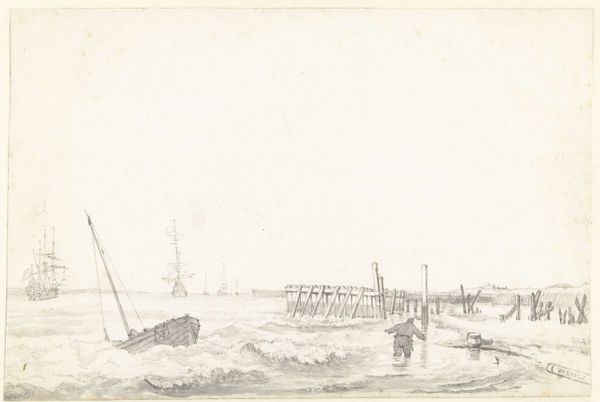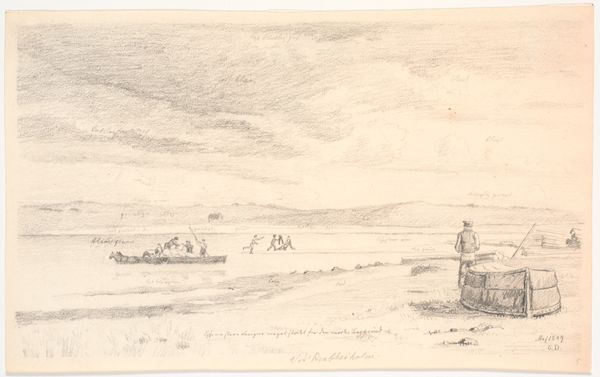
Copyright: Public Domain
Otto Scholderer sketched this view of the coast of Littlehampton in 1876, capturing the vast expanse of the sea. The windmill and carts are icons of a pre-industrial age, symbolizing human ingenuity harnessing nature's power. The windmill, in particular, has ancient roots. From simple grain grinding to complex industrial applications, it has been a persistent symbol of progress. Even Don Quixote tilted at windmills, not understanding progress and change were coming. The sea, too, is a potent symbol of life, death, and the subconscious, often linked with the 'horror vacui'—the fear of emptiness. Throughout history, cultures have projected hopes and fears onto its boundless surface, creating a powerful emotional experience. This interplay evokes a deep, almost primal response within us. These motifs have resurfaced, evolved, and taken on new meanings, yet their psychological roots remain as constant as the turning of a wheel and the rhythm of the tide.
Comments
No comments
Be the first to comment and join the conversation on the ultimate creative platform.
